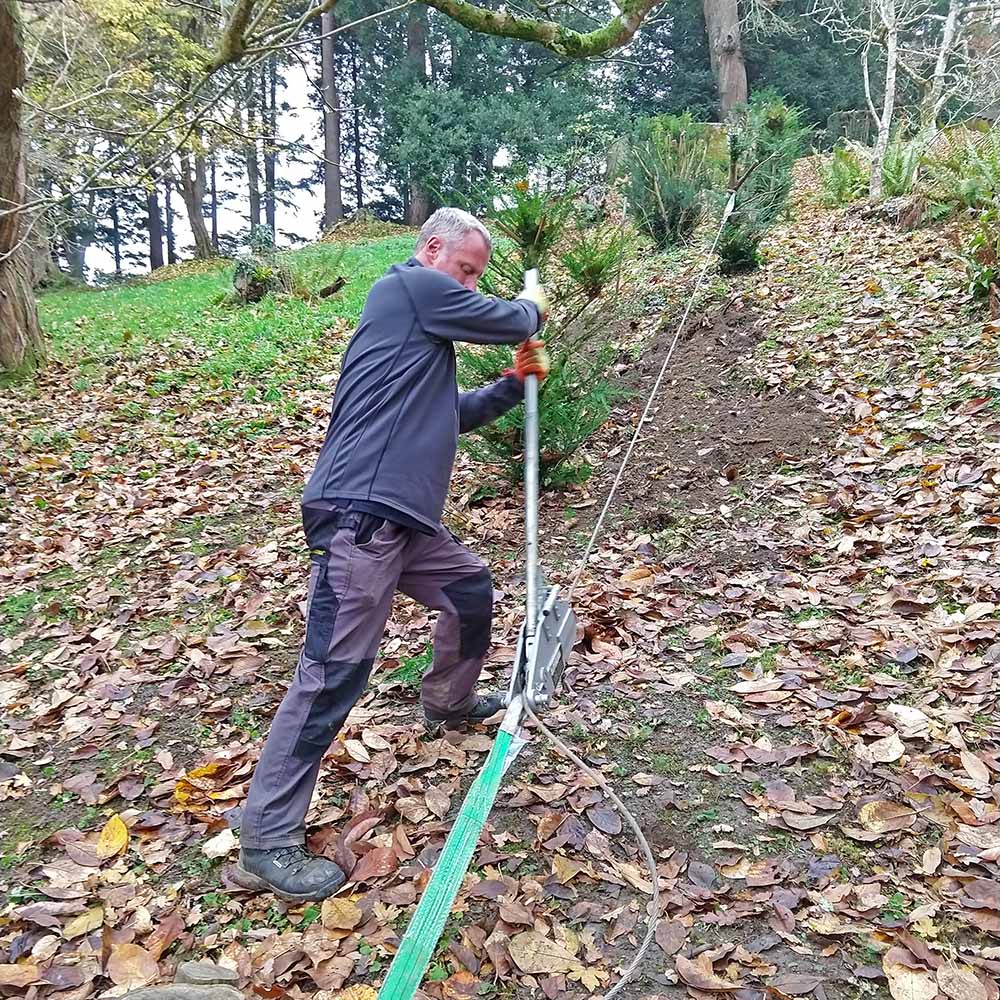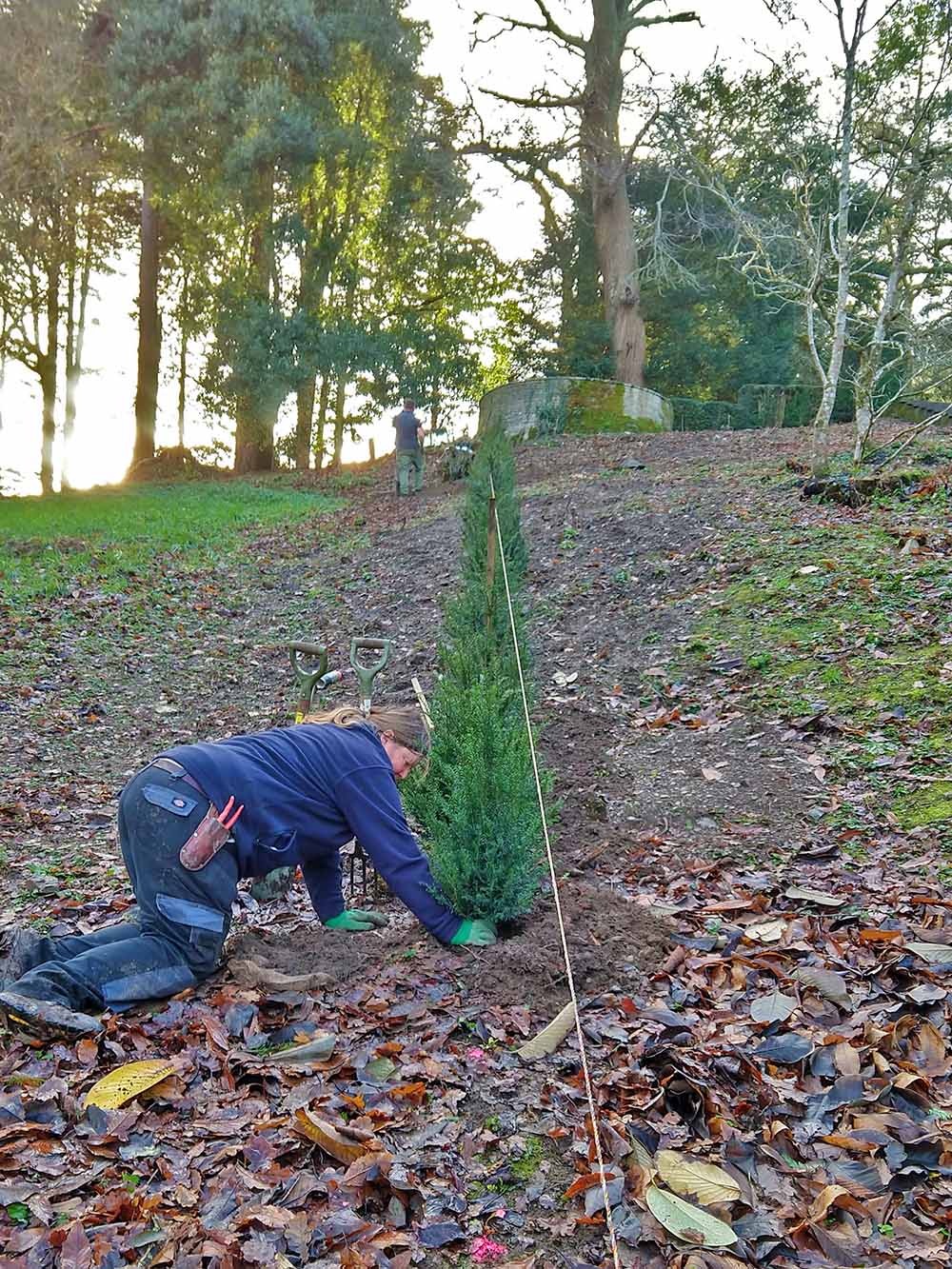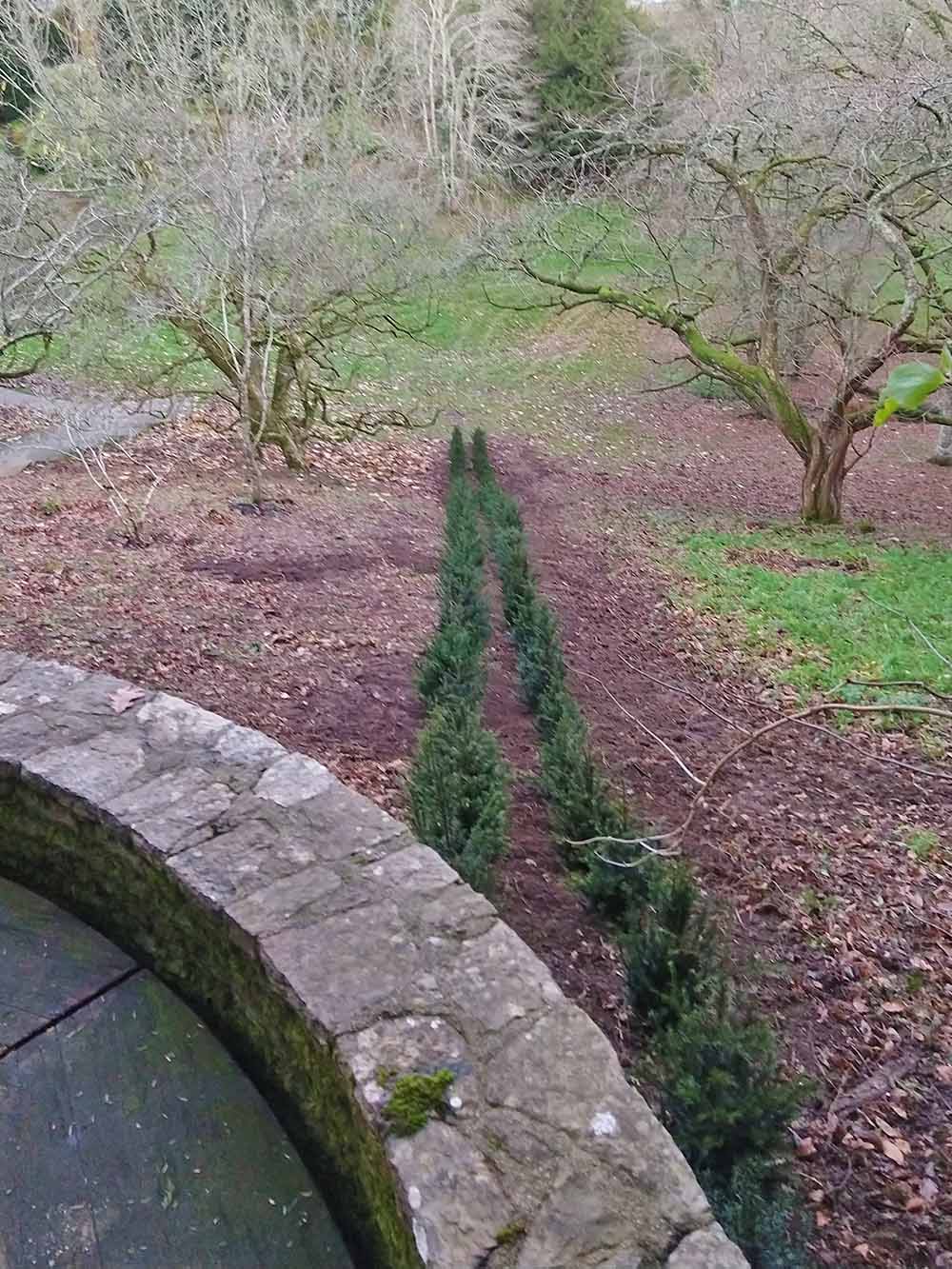Dan Pearson’s masterplan for Dartington Hall’s grade II listed gardens expresses the idea of a many-sided life through five areas: arrival, culture, production, play and gardens.
Work has already started on the gardens area, the rich historic formal landscape setting for Dartington Hall. The gardens team are working on tasks with existing features – starting the process of considered planting edits and subtle design interventions. They’re undertaken slowly and carefully to protect and enhance the special character of this place.
Below is the latest in our series of regular blogs from members of the gardens team who share the news from the ground.
During one of Dan Pearson’s earlier visits he noted the overgrown and somewhat neglected state of the yew hedges bounding the Magnolia Steps.
Being a champion of renovation and rejuvenation he initially decided to retain the yew hedge to the left hand side of the steps and asked us to give them a severe haircut. As such, Mo and Richard from our gardens team were tasked with administering said haircut to take the hedge down from its hefty four to five metres’ height, to roughly chest height – no mean task, even for a couple of seasoned horticultural hairdressers such as these two.
This trim was deemed sufficient to allow plenty of light, air and moisture in to work their magic and to see if nature would take its course and encourage the hedge back into rude health. With the helpful boost of a liberal sprinkle of fish, blood and bone feed it was hoped to give the old hedge the best chance to green up, fill out and show its worth.
However, in subsequent visits Dan’s thoughts on the hedge had veered towards replacement rather than rejuvenation as the hedge looked too scruffy, sparse and misaligned. The poor old hedge had been given sufficient time to perform and had not delivered. So out it had to come!

Yew removal: Mike lets the winch take the strain
With the aid of a winch, wire rope, brute force, sweat, tears along with a good helping of blind faith and persistence – as is usually the way with this type of job – we got busy. It has to be said a variety of other methods had been mulled over for the hedge removal, ranging from big boys/girls toys in the form of a mini digger, to good old fashioned manual digging with a spade.
These two options were ditched due to the steepness of the terrain for the digger, the inefficiency of hand digging, and the possible resultant collapse/demise of the gardeners tasked with the spade work. Thus, winching it was.
Apart from a couple of stubborn/bloody-minded yews, the hedge removal went well, with the only casualty being the winch itself, which ‘died’ half way through the last stump extraction. Talk about falling at the last hurdle. So the yew hedge bit back, having the last laugh, and a request for a new winch will be winging its way to poor John Channon (estate manager) who we suspect will not be laughing! In all fairness the winch looked as though it was a relic from Elmhirsts’ time and if not broken, could have been retired and placed as an exhibit in a museum of agricultural/forestry antiquities from a bygone era.
After the successful removal of the hedge the gardens team were flying along and with the bit between their teeth were looking forward to planting its replacement. Fortunately Ian Gilbert (head gardener) had managed to source in excess of 100 good quality English yew plants (Taxus baccata) in line with Dan’s planting plan.
So Richard, with his customary eye for detail and organisational skills, marshalled the troops for planting.

Sally does a bit of legacy planting

Our new yews, as seen from the Whispering Circle
This was certainly not going to be a sloppy ‘bosh them in by eye’ affair; no no no, not on Richard’s watch. A string line was strung from the top to the bottom of the Magnolia Steps starting just below the Whispering Circle, with a 70cm space between each plant measured by a highly technical tool – namely a piece of stick cut to a length surprisingly enough of 70cm.
The planting positions were marked out with a delightfully garish, fluorescent, pink spray marker paint hand-picked by Richard himself! In fact, to be correct, it was borrowed from Mike (Newby), our conservation warden, who hand-picked it himself! NICE!
Each yew plant was laid out along the string line, its individual hole dug, and a feed of fish, blood and bone incorporated and forked into the bottom of the hole and also into the backfill soil, and the yews planted and heeled in. After a bit of rejigging and thorough watering, row one was complete and the second row was planted in the same fashion at a width of 70cm from the first row, but orientated such that the double row was in a staggered formation.
So, this was job done, bar a healthy mulch of the garden’s wood chip to retain moisture, supress weed growth, and eventually provide nutrients to the young yews once broken down.
And so on to the next exciting instalment of Dan’s plan..

It would be good to have an update on progress in the gardens. A lot must have happened in the last year.
Thanks a lot for this. Very useful. I’ve always felt the premia involved on hedging was always too much, and tricky to time and size to really make an impact.
Last guy I know who did a lot of hedging got his face ripped off!
I had no idea all this was going on! Derek Ambler, you hide your light under a bushel. 🙂